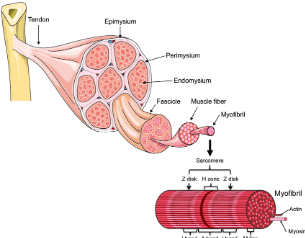The Concept Map: Muscle Structural Organization illustrates a complex hierarchy, beginning with individual muscle fibers and culminating in the entire muscle unit. This structured arrangement is fundamental to understanding how muscles generate force and facilitate movement. By examining the components of muscle fibers, including their intricate interactions and variations, we can gain insight into the functional implications of their organization. However, the nuances of this relationship raise questions about how these structures adapt to varying physical demands, prompting a closer look at the underlying mechanisms that govern muscle performance.
Overview of Muscle Types
When considering the remarkable complexity of the human body, the diversity of muscle types stands out as a critical element in understanding how movement and function are achieved.
Smooth muscle facilitates involuntary movements, while cardiac muscle is vital for heart function.
Skeletal muscle enables voluntary movement, playing a key role in muscle physiology and regeneration, ultimately supporting overall muscle function and health.
Read More Cute:_Enpbvsmavu= Rainbow Unicorn
Hierarchical Concept Map: Muscle Structural Organization
Understanding the hierarchical Concept Map: Muscle Structural Organization is fundamental to comprehending how they function in coordination with one another.
The muscle hierarchy comprises several structural levels, starting from individual muscle fibers to fascicles, and culminating in the entire muscle itself.
This organization allows for efficient force generation and movement, highlighting the intricate relationship between these levels and the overall functionality of the muscular system.

Components of Muscle Fibers
Muscle fibers, the fundamental units of muscle tissue, are composed of several key components that contribute to their structure and function.
Central to this organization is the sarcomere structure, which forms the basic contractile unit.
Muscle fiber types, including slow-twitch and fast-twitch fibers, further diversify muscle capabilities, allowing for varying responses to physical demands while maintaining integrity and efficiency in movement.
Functional Significance of Muscle Organization
The intricate organization of muscle fibers plays a pivotal role in their functional performance, influencing how muscles generate force and adapt to various physical demands.
This structural design enhances muscle efficiency, allowing for optimal contraction patterns.
Well-organized muscle fibers contribute to improved force generation during activities, enabling the body to respond effectively to challenges and maintain physical freedom in movement and performance.
Read More Cute:_Dzaztai22k= Homecoming Poster Ideas
Conclusion
In summary, the intricate tapestry of Concept Map: Muscle Structural Organization, from the minuscule sarcomere to the magnificent bulk of entire muscles, embodies a marvel of biological engineering. This hierarchical arrangement not only facilitates unparalleled force generation but also orchestrates movements with the precision of a symphony. Understanding these components reveals the extraordinary adaptability and responsiveness of muscles, transforming the human body into a dynamic powerhouse capable of extraordinary feats, defying the very limits of physical capability.
